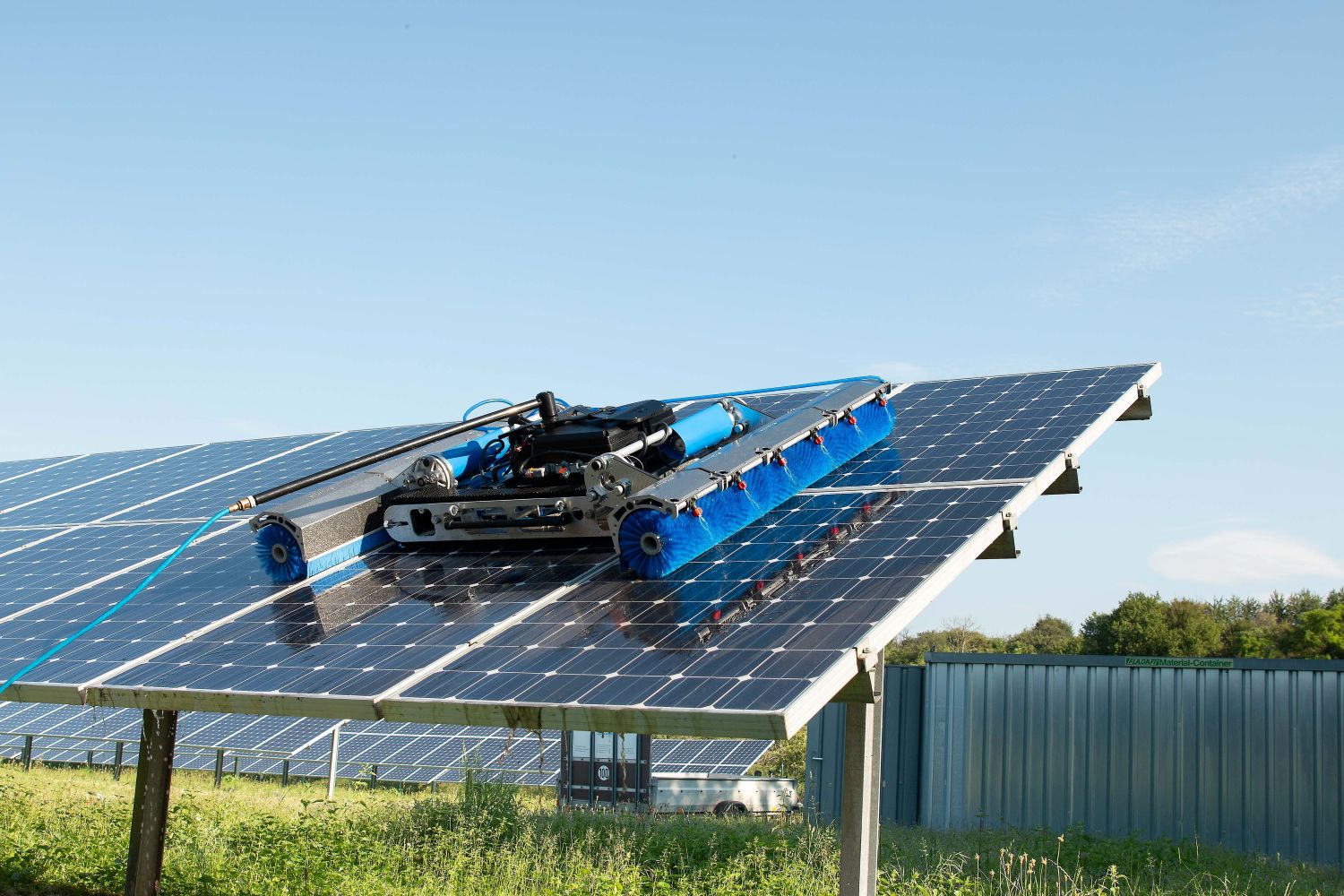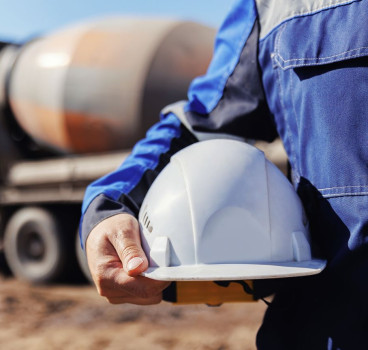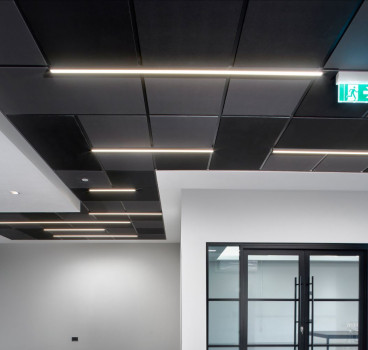How AI robots are revolutionising Australian solar farm construction
Australia continues to build massive solar farms, vital infrastructure in the nation's transition to renewable energy. However, the sheer scale of these projects presents significant logistical and labour challenges. Now, a groundbreaking development Down Under is signalling a major change in the way these mega-projects are built – thanks to the successful commercial deployment of an AI-driven solar module mounting robot, writes John Ridgeway.
Chinese technology firm Leapting has recently achieved a significant milestone at French renewable energy developer Neoen's massive 350-MW/440-MWp Culcairn Solar Farm in New South Wales. Using their "Automatic Navigation Solar Module Mounting Robot," a sophisticated piece of machinery equipped with artificial intelligence, the company has autonomously installed nearly 10,000 photovoltaic (PV) modules. This marks Leapting's first major project within the Australian commercial solar sector and the results are stunning, hinting at a future where robotic automation will play a central role in solar farm construction worldwide.
Australia already has a substantial installed solar capacity, a testament to its commitment to clean energy. Yet, as solar farms grow in size and complexity, the traditional reliance on manual labour for module installation faces increasing hurdles.
Lifting and precisely mounting solar panels, for example, often weighing upwards of 20-30 kilogrammes, is physically demanding and repetitive, leading to potential strain and injury for workers. Large-scale projects require the installation of hundreds of thousands, even millions, of modules and manual installation can be a slow and time-consuming process, impacting project timelines and return on investment.
Many Australian solar farms are situated in remote, often hot and dusty, environments, making it challenging to attract and retain a workforce. Ensuring consistent and accurate module placement across vast arrays is also crucial for optimal energy generation. Furthermore, manual installation can be prone to human error and working with heavy equipment and at height poses inherent safety risks for human installers. It is against this backdrop that the emergence of automated solutions like Leapting's robot presents a potentially transformative alternative.
A robot with a mission
The "Automatic Navigation Solar Module Mounting Robot" developed by Shanghai-based Leapting is not simply a mechanical arm. It is an intelligent system designed to navigate construction sites and precisely install solar panels with minimal human intervention.
The robot uses advanced artificial intelligence and visual sensors to autonomously navigate the solar farm terrain, identify designated mounting locations and recognise the solar modules. This eliminates the need for constant manual guidance.
Equipped with a 2.5-metre-high robotic arm, it can efficiently lift, manoeuvre and precisely position PV modules onto the mounting structures. Its ability to handle panels up to 30 kilogrammes demonstrates its capacity to manage standard-sized modules. The robot also features a self-guided, self-propelled crawler chassis, allowing it to move across the construction site independently, adapting to uneven ground and obstacles.
Furthermore, integrated sensors and AI algorithms enable the robot to detect and avoid obstacles in its path, ensuring safe and uninterrupted operation. To guarantee accurate and consistent module placement, it also employs multi-modal 3D sensors, ensuring optimal alignment for maximum energy capture.
The deployment of Leapting's robot at the Culcairn Solar Farm has yielded impressive results, providing tangible evidence of the benefits of automation in this sector. According to Leapting's reports, it achieved an installation rate significantly faster than manual teams, reportedly mounting approximately one panel per minute (60 modules per hour). This is a stark contrast to the estimated 15 minutes per module that typically requires a team of 3-4 human workers.
By automating a significant portion of the installation process, Leapting further claims their robot contributed to a 25% reduction in the overall construction timeline for the Culcairn project. This acceleration can translate to earlier grid connection and faster revenue generation for solar farm developers.
Overall, the robotic installation process is described as "efficient, safe, and stable," with claims of "zero damage to both manpower and modules." This highlights the potential for robots to handle the heavy lifting and repetitive tasks, reducing the risk of human injury and minimising damage to valuable solar equipment.
While specific cost figures for the Culcairn deployment have not been publicly detailed, Leapting estimates that their automated process can lead to an overall reduction in installation costs of around 30%. This is driven by factors such as reduced labour requirements and faster project completion.
Looking to the future
The successful deployment at Culcairn is not an isolated event. Leapting has announced plans for further deployments in Australia, including a larger project where they aim to install nearly half a million PV modules using their robotic technology. This ambition underscores the company's confidence in the capabilities and scalability of their solution.
All this means that the implications of this technology for the broader solar industry are profound. The ability to significantly accelerate the construction of large-scale solar farms is crucial for nations worldwide striving to meet ambitious renewable energy targets and combat climate change. It immediately addresses labour shortages and by taking over physically demanding and potentially hazardous tasks, robots can also contribute to safer working environments on solar farm construction sites.

However, while the prospect of a robotic workforce for solar farms is exciting, it also raises other important considerations. The widespread adoption of robotic installation will necessitate a shift in the roles and skills required in the solar construction industry. Training programmes will be needed to equip workers with the skills to operate, maintain and manage these robotic systems.
The upfront cost of acquiring and deploying robotic systems can also be significant. However, these costs need to be weighed against the long-term savings in labour and project timelines. And because solar farms are built on a variety of terrains and with different mounting structures. The versatility and adaptability of robotic systems to these diverse conditions will be crucial for their widespread applicability.
That said, Leapting's successful deployment of its AI-driven solar module mounting robot in Australia marks a significant step towards the automation of large-scale solar farm construction. The demonstrated gains in efficiency, speed and safety offer a compelling vision for the future of the industry. As technology continues to advance and costs potentially decrease, robotic automation is poised to play an increasingly vital role in accelerating the global transition to clean, sustainable energy. The sun-drenched landscapes of Australia may well be witnessing the dawn of a new era - the age of the solar assembly line, powered by intelligent machines.
Please note: The images used in this article are for illustration purposes and do NOT show the actual robots being used.
Additional Blogs

Why good contractors are walking away from bad projects
There is a growing change happening across the construction industry, one that many clients still have not fully recognised. Highly competent, reputable contractors are increasingly walking away from...
Read moreWhen fire breaks out who really knows the system
The story that caught my attention recently wasn’t about fire growth or building loss, it was about confusion. Specifically, the confusion faced by the fire service when arriving at buildings...
Read more

The design and development of Nexus Layouts
When Zentia set out to rethink the suspended ceiling, the brief was clear: deliver greater creative freedom for designers, more distinctive visual identity for clients, and a solution that could keep...
Read more